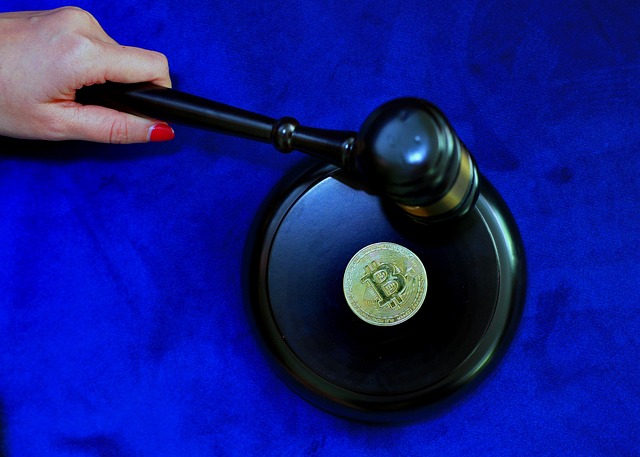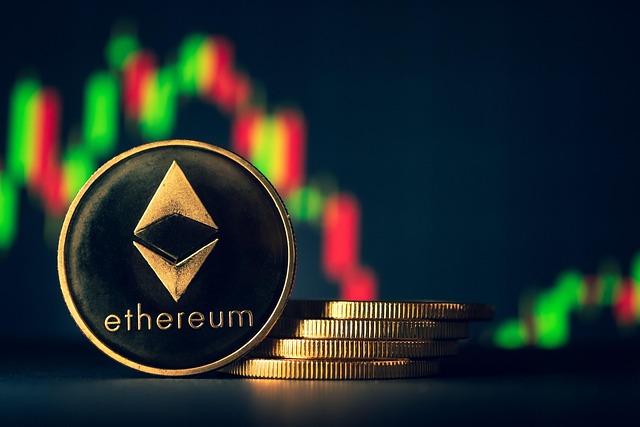What is a Market Maker Crypto: Roles, Risks, and Strategies
Author: Jameson Richman Expert
Published On: 2025-11-04
Prepared by Jameson Richman and our team of experts with over a decade of experience in cryptocurrency and digital asset analysis. Learn more about us.
What is a market maker crypto? In short, a crypto market maker is a firm, trader, or algorithm that continuously provides buy and sell orders for a cryptocurrency to create liquidity, tighten spreads, and support orderly markets. This article explains the different types of market makers in crypto (centralized and decentralized), how they operate, why they matter to traders and exchanges, the risks and regulatory considerations, and practical strategies and tools — including automated solutions and exchange programs — to work with or become a market maker.

Table of contents
- What is a crypto market maker?
- Types of market makers: CEX vs DEX (AMMs)
- How market making works: mechanics and key metrics
- Market making strategies and algorithms
- Tools, bots, and automation
- How exchanges incentivize market makers
- Risks, costs, and regulatory issues
- How retail traders interact with market makers
- Case studies and examples
- Actionable checklist: becoming a market maker
- Further reading and references
What is a crypto market maker?
A market maker supplies liquidity by posting both buy (bid) and sell (ask) orders on an exchange. In cryptocurrency markets, market makers can be specialized trading firms, exchanges themselves, proprietary trading desks, or automated protocols. Their role is to ensure there are always counterparties to trades — reducing slippage for traders, narrowing spreads, and maintaining smoother price discovery.
Essential functions of crypto market makers include:
- Providing continuous two-sided quotes (bids and asks).
- Reducing bid-ask spreads to improve execution quality.
- Absorbing temporary imbalances in supply and demand.
- Supporting new token launches or low-liquidity pairs.
For a formal definition and background on market making in general, see the Wikipedia entry on market making:
Types of market makers in crypto
Centralized exchange (CEX) market makers
On centralized exchanges like Binance, Bybit, Bitget, and MEXC, market makers are typically professional trading firms or proprietary desks that use high-frequency algorithms to quote markets on an order book. They may be incentivized by fee rebates, reduced trading fees, or special programs. Retail traders can interact with these market makers through the public order book or, in some cases, apply for maker programs.
Register on popular CEXs where market makers operate:
Decentralized market makers: Automated Market Makers (AMMs)
On decentralized exchanges (DEXs), market making is performed by liquidity pools and smart contracts known as Automated Market Makers (AMMs). Popular implementations include Uniswap, Curve, and Balancer. AMMs replace order-book market making with mathematical pricing formulas (e.g., Uniswap v2’s x*y=k) and enable anyone to become a liquidity provider (LP).
See the general concept on the Wikipedia page for automated market makers:
Automated market maker — Wikipedia
Hybrid models
Some projects mix centralized and decentralized elements: centralized exchanges may route liquidity to DEX aggregators, or AMMs may use external price oracles and professional market makers to manage deep liquidity for large orders.

How market making works: mechanics and key metrics
Order book mechanics (CEX)
In an order book model, market makers post bids (buy orders) and asks (sell orders) at multiple price levels. Key metrics they monitor include:
- Spread: the difference between the best ask and best bid — a core source of profit for market makers.
- Depth: how much volume is available at the top of the book within a given price range.
- Quote-to-trade ratio: frequency of quote updates compared to executed trades.
- Inventory: net position in the asset — market makers manage inventory risk through hedging.
AMM mechanics (DEX)
For AMMs, liquidity providers deposit token pairs into a pool and earn trading fees proportional to their share of the pool. Prices change automatically according to the pool’s formula as traders swap tokens. Important metrics for AMMs include:
- Liquidity depth: total value locked (TVL) in the pool determines slippage for large trades.
- Impermanent loss: potential loss vs simply holding when token prices diverge.
- Fee yield: trading fees earned by LPs as a return on capital.
Market making strategies and algorithms
Crypto market making is driven by quantitative strategies. A few common approaches:
1. Spread capture (quote-making)
Place both buy and sell quotes and profit on executed spreads. Key parameters: spread width, quote size, and refresh frequency. Algorithms continuously adjust quotes to manage inventory and adapt to volatility.
2. Inventory control and hedging
Market makers need to avoid large directional exposure. Techniques include dynamic hedging (taking offsetting positions in correlated assets or derivatives), skewing quotes to rebalance inventory, or using futures/options to hedge risk.
3. Statistical arbitrage
Exploit price differences across exchanges or correlated pairs. For example, if ETH is slightly cheaper on one exchange, buy there and sell on another. Fast connectivity and low-latency execution are essential.
4. Liquidity provision on AMMs
AMM liquidity strategies include concentrated liquidity (Uniswap v3), multi-pool exposure (Balancer), and active rebalancing to reduce impermanent loss. LPs may provide liquidity only within certain price ranges to increase capital efficiency.
5. Market-making with TWAP/VWAP
Execution algorithms that break large orders into time-weighted or volume-weighted slices to reduce market impact. Market makers may use TWAP/VWAP strategies to manage inventory and provide predictable liquidity.
Tools, bots, and automation
Modern market making is heavily automated. Firms deploy specialized market-making engines, API connectivity, low-latency co-location, and sophisticated risk controls. Retail traders can also use commercial bots and services to deploy market-making strategies.
For a roundup of automated trading tools and robots that many market makers (and advanced retail traders) use, see this guide to trading robots:
Top 10 trading robots for 2025
Popular tool categories:
- Market-making engines with inventory control
- Cross-exchange arbitrage bots
- Liquidity provision dashboards for AMMs
- Backtesting and simulation frameworks

How exchanges incentivize market makers
Exchanges rely on market makers to maintain liquid order books. Incentives commonly include:
- Fee rebates or reduced maker fees.
- Dedicated market-maker programs with tailored APIs and priority support.
- Liquidity mining incentives or token rewards in the case of DEXes.
Exchanges also publicly list their maker programs and requirements that often include minimum quoting sizes, uptime SLAs, and quoting obligations. For retail traders seeking exchange options by region, explore localized reviews like this best crypto trading platform Mexico guide which highlights exchange features and liquidity options.
Risks, costs, and regulatory issues
Market-making risks
- Inventory risk: adverse price moves on held positions.
- Adverse selection: informed traders may exploit stale quotes.
- Technology risk: outages, bugs, or latencies can result in large losses.
- Counterparty risk (CEX): exchange insolvency or withdrawal restrictions.
- Impermanent loss (AMM): divergence loss for LPs in DEX pools.
Costs
Costs include exchange and network fees, capital costs, spread exposure, and opportunity costs of capital tied up in liquidity provision. High-frequency market makers also invest heavily in infrastructure.
Regulatory and market manipulation concerns
Market making operates in a regulatory gray area in some jurisdictions because the same behaviors can be used for legitimate liquidity provision or for manipulative practices (e.g., wash trading, spoofing). Regulators like the U.S. Securities and Exchange Commission provide guidance on market manipulation and surveillance (see the SEC overview):
SEC — Market Manipulation: Fast Answers
Many exchanges enforce rules to differentiate market-making from manipulative activity. Firms should ensure transparent reporting, compliance with KYC/AML, and adherence to exchange policies.
How retail traders interact with market makers
Understanding market makers helps retail traders get better execution:
- Use limit orders when market depth is thin to avoid paying the spread.
- Place larger orders with care — split across time or use TWAP/VWAP to reduce impact.
- Watch depth and spread as indicators of potential slippage and volatility.
If you plan to trade with leverage or margin, be aware that market-making liquidity can suddenly tighten during stress events. For a detailed look at margin trading mechanics and risk controls, review this guide on Kraken margin trading:
Can you trade with leverage on Kraken — margin trading guide

Case studies and examples
Uniswap (AMM) as a decentralized market maker
Uniswap’s smart contracts automatically provide constant product pricing. Liquidity providers add token pairs and earn fees, effectively acting as decentralized market makers. The advantages: permissionless participation and continuous availability. The disadvantages: impermanent loss and potential front-running by bots.
Centralized market maker on Binance
Professional firms quote tight spreads on major pairs like BTC/USDT and ETH/USDT on Binance. These firms rely on fast API execution and benefit from maker fee discounts. Binance’s high liquidity attracts both market makers and institutional traders. If you want to trade on Binance or explore its liquidity, you can register here:
ETH liquidity and institutional interest
Ethereum markets attract significant market-making activity due to ETH’s deep liquidity and derivatives markets. Institutional narratives (for example, price forecasts and macro views) influence liquidity provisioning decisions. For more on ETH’s potential and institutional views, see this in-depth analysis:
Cathie Wood ETH price prediction — analysis
How to become a market maker: practical checklist
Whether you’re an institutional firm or an advanced retail trader, becoming a market maker requires planning and capital. Here’s a practical checklist:
- Define scope: which assets/pairs will you make markets in? (High-cap pairs like BTC/USDT are a good start.)
- Capital allocation: determine how much capital to allocate for quotes and hedging.
- Technology stack: secure low-latency API access, a robust market-making engine, and monitoring tools.
- Risk controls: implement position limits, stop-loss policies, and automated hedging rules.
- Compliance: set up necessary KYC/AML, reporting, and audit trails.
- Backtesting: simulate strategies using historical order-book and tick data to validate parameters.
- Start on testnets or small sizes: ramp up gradually to monitor execution quality and slippage.
Exchange partnerships and maker programs can reduce costs. Consider exchanges that provide incentives and clear program terms. For an alternate exchange option, check out MEXC:
AMM liquidity provider tips: reduce impermanent loss
If you plan to be an LP on an AMM, these practical steps can help:
- Choose pools with high fee yield relative to volatility.
- Consider stablecoin-to-stablecoin pools for minimal impermanent loss (e.g., USDC/USDT pools).
- Use concentrated liquidity (Uniswap v3) to increase capital efficiency but monitor range exposure closely.
- Monitor pool composition and rebalance or withdraw when divergence risk increases.

How to detect market maker activity
Detecting market maker footprint can help traders understand order flow and timing:
- Consistent tight spreads: likely market maker presence.
- Frequent small-volume orders: algo quoting strategies refreshing quotes.
- Large hidden liquidity: iceberg orders and iceberg-style behavior often indicate sophisticated market participants.
- Order-book layering and replenishment: rapid replenishment of bids/asks after trades suggests active market makers restating quotes.
Ethical concerns and market fairness
Market making provides a public good (liquidity) but can be abused. Practices such as spoofing (placing and canceling fake orders to mislead others) and wash trading (creating artificial volume) undermine fair markets and may be illegal. Exchanges and regulators monitor suspicious patterns. Firms should prioritize transparency and abide by local securities and commodities laws.
Where to learn more and further reading
Authoritative resources:
- Investopedia — Market Maker
- Uniswap documentation
- Wikipedia — Market making
- Wikipedia — Automated market maker
Additional reading addressing algorithmic tools, trading platforms, and market contexts:
- Trading robots and automated strategies: Top 10 trading robots for 2025
- Ethereum market potential and liquidity context: Cathie Wood ETH price prediction
- Margin trading and leverage considerations (important for hedging and risk): Kraken margin trading guide
- Exchange selection by region and liquidity differences: Best crypto trading platforms — Mexico

Practical example: building a simple market-making logic
Here’s a simplified logic flow used by many basic market-making bots (conceptual steps):
- Fetch live order book and recent trades for target pair.
- Compute mid-price and appropriate spread based on volatility and desired quoted profit.
- Post symmetric buy and sell limit orders around mid-price, sized according to capital and risk limits.
- Continuously monitor fills; if inventory drifts, adjust quote skew or hedge via futures.
- Cancel stale orders and refresh quotes at a set frequency to avoid being picked off by fast-moving prices.
Remember: this is a conceptual flow. Real implementations require robust error handling, latency management, and regulatory compliance.
Final thoughts: is market making right for you?
If your goal is to provide liquidity, capture spread income, or participate in DeFi yields, market making can be lucrative but requires rigorous risk management and significant operational capability. Institutional players invest heavily in speed and risk systems; retail participants can compete by focusing on niche pairs, AMM LP strategies, or using managed market-making tools.
Whether you’re analyzing ETH markets, exploring automated tools, or setting up a market-making operation, educate yourself on the mechanics and regulations. Combine backtesting with conservative live testing and prioritize transparency and compliance.
Useful exchange sign-up links (examples)
- Binance: Register on Binance
- MEXC: Register on MEXC
- Bitget: Register on Bitget
- Bybit: Register on Bybit
Conclusion
Understanding what is a market maker crypto is essential for traders, liquidity providers, and anyone participating in crypto markets. Market makers — whether centralized firms or decentralized AMMs — underpin price discovery and liquidity. They earn income by capturing spreads or fees but face inventory, technology, and regulatory risks. With the right tools, risk controls, and knowledge, individuals and firms can participate in market making or interact more effectively with market makers to improve their trading outcomes.
For hands-on tools and deeper reading, follow the linked resources above and consider starting with simulation/backtesting before committing capital.